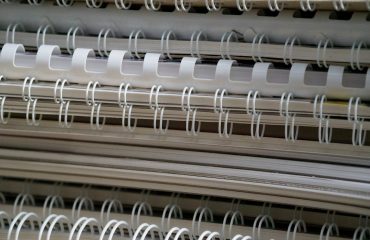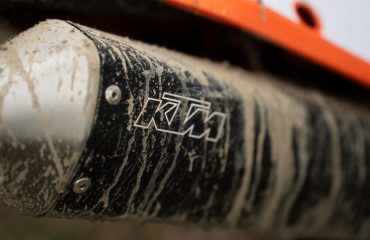body { font-family: sans-serif; line-height: 1.6; }
h1, h2, h3 { color: #333; }
img { max-width: 100%; height: auto; }
Hot rolled flat bars are a fundamental component in countless industries, from construction and automotive to manufacturing and agriculture. Understanding their properties and applications is crucial for engineers, fabricators, and anyone working with steel. This comprehensive guide will delve into the world of hot rolled flat bars, exploring their manufacturing, characteristics, and diverse uses.
The Manufacturing Process: From Ingot to Flat Bar
The journey of a hot rolled flat bar begins with molten steel poured into molds to create ingots. These ingots, massive blocks of solidified steel, are then reheated to a high temperature – typically above their recrystallization temperature – in a furnace. This high temperature allows for significant plasticity, making the steel easily deformable. The heated ingot then undergoes a series of rolling processes. Initially, it passes through large rollers that gradually reduce its thickness and shape it into a rough flat bar. Further passes through progressively smaller rollers refine the shape and dimensions, achieving the desired thickness and width tolerances. Finally, the hot rolled flat bar is cooled, often in a controlled manner to achieve specific metallurgical properties. This process significantly affects the final properties of the bar, including its strength, ductility, and surface finish.
Mechanical Properties and Characteristics: Understanding the Strength
Hot rolled flat bars possess a unique set of mechanical properties that determine their suitability for various applications. These properties are significantly influenced by the steel grade used and the rolling process. Key characteristics include:
- Tensile Strength: The maximum stress a material can withstand before breaking under tensile load. Hot rolled flat bars generally exhibit high tensile strength.
- Yield Strength: The stress at which a material begins to deform permanently. This is a crucial parameter for structural applications.
- Ductility: The ability of a material to deform plastically before fracture. Hot rolled bars show good ductility, allowing for bending and forming.
- Hardness: A measure of a material’s resistance to indentation. Hot rolled bars typically have moderate hardness.
- Toughness: The ability of a material to absorb energy before fracturing. This is important for applications subjected to impact loads.
The exact mechanical properties vary depending on the specific steel grade (e.g., 1018, 1020, 4140) used in the manufacturing process. These grades are often specified to meet the requirements of particular applications.
Diverse Applications: Where You’ll Find Hot Rolled Flat Bars
The versatility of hot rolled flat bars makes them suitable for a wide array of applications across numerous industries. Some prominent examples include:
- Construction: Used in structural components, reinforcing bars, and various building elements.
- Automotive: Found in chassis components, frames, and other structural parts.
- Manufacturing: Used as raw material for creating various components and machinery parts.
- Agriculture: Used in the construction of farm equipment and machinery.
- Transportation: Used in railway tracks, bridges, and other infrastructure projects.
- Machining: Often used as a base material for machining more complex components.
The specific application dictates the required steel grade and dimensions of the flat bar. Careful consideration of the mechanical properties is crucial in selecting the appropriate material for a particular application.
Advantages and Disadvantages: Weighing the Pros and Cons
Like any material, hot rolled flat bars have their advantages and disadvantages:
Advantages:
- Cost-effective: Hot rolling is a relatively inexpensive manufacturing process compared to other methods like cold rolling.
- High Strength: Offers excellent strength-to-weight ratio.
- Good Weldability: Can be easily welded using various techniques.
- Widely Available: Readily available in various sizes and steel grades.
- Versatile: Suitable for a broad range of applications.
Disadvantages:
- Lower Surface Finish: Compared to cold rolled bars, hot rolled bars have a rougher surface finish.
- Dimensional Inaccuracies: May have slightly larger dimensional tolerances compared to cold rolled bars.
- Heat Treatment Limitations: Certain heat treatments may not be as effective as on cold rolled steel.
Choosing the Right Hot Rolled Flat Bar: Considerations for Selection
Selecting the appropriate hot rolled flat bar requires careful consideration of several factors:
- Steel Grade: The desired mechanical properties (strength, ductility, hardness) will dictate the choice of steel grade.
- Dimensions: The required thickness, width, and length of the bar must be specified.
- Surface Finish: While generally rougher than cold rolled, some applications may tolerate a less precise finish.
- Application Requirements: The intended use will determine the necessary mechanical properties and tolerances.
- Cost: Balancing performance requirements with budgetary constraints is essential.
Consulting with a materials expert can be invaluable in making an informed decision regarding hot rolled flat bar selection.
This comprehensive guide provides a strong foundation for understanding hot rolled flat bars. Remember to always consult relevant specifications and standards when working with these materials to ensure safety and proper application.
Tags:
hot rolled flat bar, hot rolled steel, flat steel bar, steel bar properties, steel fabrication




